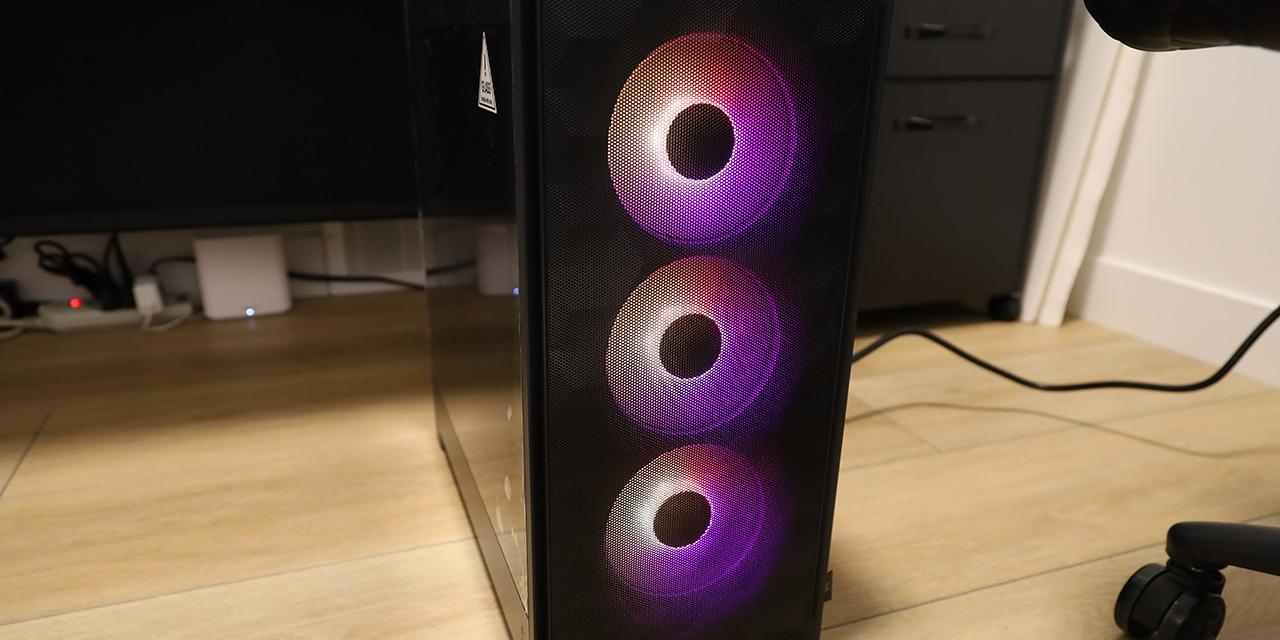Page 3 - Physical Look - Inside

To begin our internal inspection of the SilverStone ET500-ARGB 500W, I opened the PSU. Please note doing this at home may void your 3-year warranty thanks to a seal that extends over one screw on the power supply. But for your benefit, I disassembled mine, so you do not need to. There are no user-serviceable parts inside.
Taking apart the SilverStone ET500-ARGB 500W is quite straightforward with the removal of four screws. The photo above shows an overhead view of its internal components. The OEM is Channel Well Technology or CWT, which is a reputable OEM since 1993. At first glance, the build quality appears to be good. There are two main silver heatsinks inside.

Starting with the transient filter stage, we find ourselves with two metalized polyester X-capacitors, four ceramic Y-capacitors, and three ferrite coils. This is two times the number of X- and Y-capacitors than recommended, which is always nice to see. It is a bit disappointing to see that there is no metal oxide varistor, or MOV, in this power supply unit, as these devices are used to protect the power supply from AC voltage spikes. Not all modern power supply units have one though, especially for budget units, so this is not a huge issue in the case of the ET500-ARGB 500W.

On the primary side, we can see a single Chinese-made CapXon capacitor. Our ET500-ARGB 500W power supply incorporates one 270uF x 400V capacitor. This CapXon capacitor is rated at 85 degrees Celsius. Japanese capacitors are preferred when it comes to power supply units for their quality, and 105c rated capacitors are better for long term durability. However, this is a budget power supply, so cost has to be saved somewhere.

The active power factor correction or APFC circuit uses a single Diodes Incorporated GBU1006 rectifier bridge. At 280V, it has a rated current of 10A at 100 degrees Celsius, so you can theoretically pull 2800W (10A * 280V * one diode). This, of course, is limited to the fact that it is not 100% efficient, just like any electrical component or device. This also neglects the fact that other components are unable to keep up. Either way, this far exceeds the 500W this power supply unit is rated for.
Moving forward, we have two Silan Microelectronics SVF13N50F N-channel MOSFETs directly attached to the largest heatsink. These devices have a drain current of 8.2A at 100 degrees Celsius with a drain to source voltage of 500V. The maximum Static Drain-Source On-Resistance of 0.52 Ω and a typical resistance of 0.44 Ω. It is important to note the lower the resistance on these transistors is the more efficient these components will be. This is because the Static Drain-Source On-Resistance, or RDS(on), will dissipate power, so the smaller the resistance, the less power wasted. Next to the power transistors is a Cree C3D04060 silicon Schottky diode. Another transistor can be seen further down, this one being a Champion GP28S50G power field effect transistor that has a continuous drain current of 28A. It has an RDS(on) max value of 0.125 Ω and an unspecified typical RDS(on). Finally, we have a Champion CM6800TX PFC/PWM combination controller.

On the secondary side, we have a collection of smaller capacitors all rated at 85 degrees Celsius. All these capacitors are Chengx, which is another Chinese brand. Four PFC Device Corporation PFR30L60CT Schottky rectifiers are located on the second heatsink, which is responsible for generating the +12V output. The average rectified forward current for these devices is 30A at 25 degrees Celsius and 60V maximum repetitive reverse voltage. Further down the second heatsink, we have one PFC Device Corporation PFR30L45CT Schottky rectifier and one PFC Device Corporation PFR30L30CT Schottky rectifier responsible for generating the +5V and +3.3V output, respectively. The average rectified forward current for the PFR30L45CT Schottky rectifier is 30A at 25 degrees Celsius and 45V maximum repetitive reverse voltage, while the average rectified forward current for the PFR30L30CT Schottky rectifier is 30A at 25 degrees Celsius and 30V maximum repetitive reverse voltage.
Finally, we can also see a SITRONIX ST9S429-PG14 IC chip on the top layer of the board, which is responsible for overvoltage, overcurrent, overheat, and short circuit protection. The datasheet for all the components mentioned is found on their respective manufacturer’s websites.

At the end of the circuit, we have the area where all the cables are connected and lead outside of the SilverStone ET500-ARGB 500W. This is standard for your non-modular power supply with nothing of note.
Overall, the internal build quality of the SilverStone ET500-ARGB 500W is acceptable for the price. The use of Japanese capacitors would have been much better, but for this budget power supply unit, I cannot reasonably complain. Aside from a few globs of glue, the inside is very clean with plenty of spacing between the components. I also appreciate how clean the main printed circuit board is and how clear the printed text on it is.

In terms of cooling performance, there are two things we need to pay attention to for a power supply unit; namely the heatsinks and cooling fan. In this case, we can see two large heatsinks and one cooling fan inside the SilverStone ET500-ARGB 500W. When it comes to cooling, the SilverStone ET500-ARGB 500W uses an ARGB variant of the Ong Hua HA1225M12F-Z. The size of the fan is 120mm in diameter, which is the maximum size the enclosure can accommodate. It is rated for 0.45A at 12V at a maximum rotational speed of 2200 RPM.
Page Index
1. Introduction, Packaging, Specifications
2. Physical Look - Outside
3. Physical Look - Inside
4. Minor Tests and Conclusion





